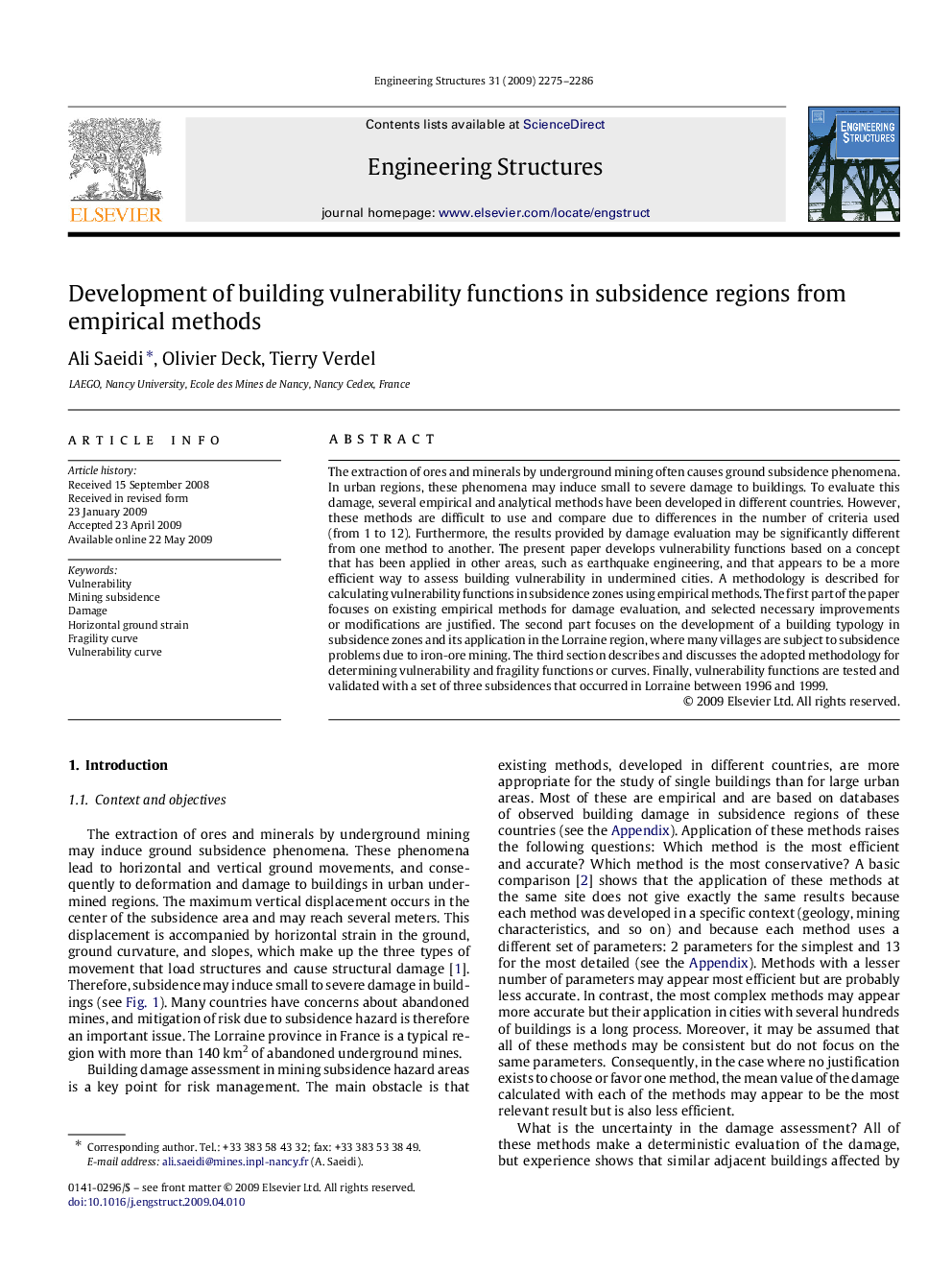| کد مقاله | کد نشریه | سال انتشار | مقاله انگلیسی | نسخه تمام متن |
|---|---|---|---|---|
| 268373 | 504433 | 2009 | 12 صفحه PDF | دانلود رایگان |

The extraction of ores and minerals by underground mining often causes ground subsidence phenomena. In urban regions, these phenomena may induce small to severe damage to buildings. To evaluate this damage, several empirical and analytical methods have been developed in different countries. However, these methods are difficult to use and compare due to differences in the number of criteria used (from 1 to 12). Furthermore, the results provided by damage evaluation may be significantly different from one method to another. The present paper develops vulnerability functions based on a concept that has been applied in other areas, such as earthquake engineering, and that appears to be a more efficient way to assess building vulnerability in undermined cities. A methodology is described for calculating vulnerability functions in subsidence zones using empirical methods. The first part of the paper focuses on existing empirical methods for damage evaluation, and selected necessary improvements or modifications are justified. The second part focuses on the development of a building typology in subsidence zones and its application in the Lorraine region, where many villages are subject to subsidence problems due to iron-ore mining. The third section describes and discusses the adopted methodology for determining vulnerability and fragility functions or curves. Finally, vulnerability functions are tested and validated with a set of three subsidences that occurred in Lorraine between 1996 and 1999.
Journal: Engineering Structures - Volume 31, Issue 10, October 2009, Pages 2275–2286